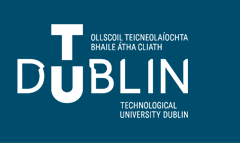Document Type
Article
Rights
Available under a Creative Commons Attribution Non-Commercial Share Alike 4.0 International Licence
Disciplines
1.4 CHEMICAL SCIENCES, 1.6 BIOLOGICAL SCIENCES
Abstract
A novel β-glucosidase from Streptomyces griseus was cloned and overexpressed in E. coli. The purified β-glucosidase (44 kDa) had a Km of 8.6±0.5 mM and a Vmax of 217±5.0 μmoles-1min-1mg at 37 °C, pH 7.2 with p-nitrophenyl-β-D glucopyranoside as substrate. The enzyme was characterised in terms of pH optimum (pH 6.9), temperature optimum (69 °C) and the influence of solvents and effectors. Purified S. griseus β-glucosidase was successfully immobilised, by simple absorption, onto zinc oxide (ZnO) nanoparticles without covalent modification. It remained tightly bound even after extensive washing and could be reused up to ten times without significant loss of activity. The immobilised enzyme had a higher optimum temperature and greater thermostability than the free enzyme. In immobilised form the enzyme readily catalysed the synthesis of alkyl glucosides.
DOI
https://doi.org/10.1016/j.pep.2017.01.011
Recommended Citation
Ryan, B., Henehan, G. T. and Kumar, P. (2017) Beta-Glucosidase from Streptomyces griseus: nanoparticle immobilisation and alkyl glucoside synthesis. Protein Expression and Purification, Feb. 1st., 2017. doi.org/10.1016/j.pep.2017.01.011
Funder
Technological University Dublin


Publication Details
Protein Expression and Purification, Feb. 1st., 2017.